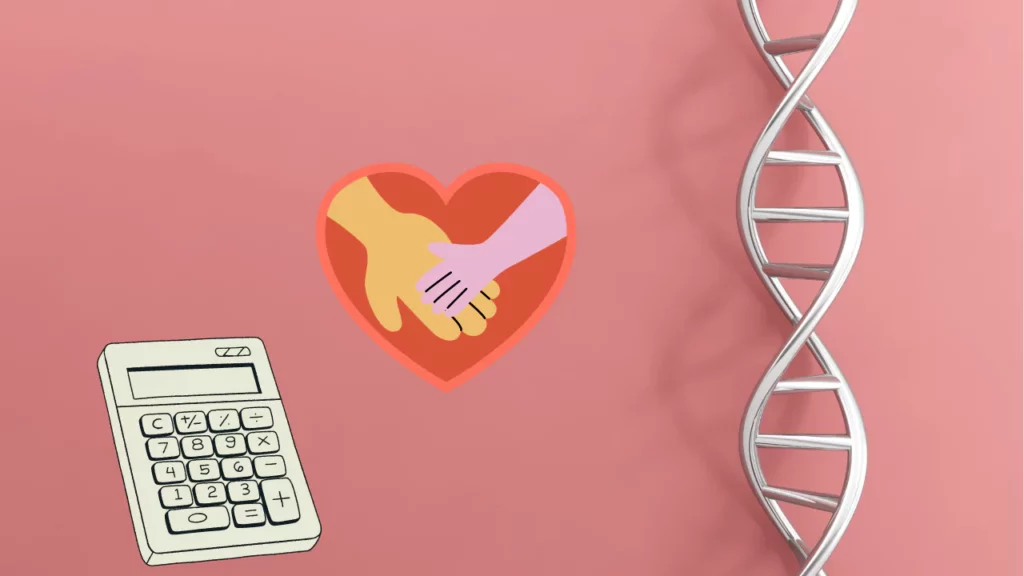The Copy Number Calculator for Real-time PCR is a tool designed to assist researchers in calculating the number of copies of DNA molecules in a sample. This calculator simplifies the process by using either the length of the DNA sequence or the molecular weight of the sequence.
Understanding the copy number is crucial for accurate quantitative PCR (qPCR) analysis, as it allows researchers to determine the concentration of target DNA in their samples.
Principles
Copy number calculation involves understanding the relationship between the amount of DNA, the length or molecular weight of the DNA sequence, and Avogadro’s number, which represents the number of molecules in one mole. The calculator uses two primary methods for calculating the copy number: based on the length of the DNA or the molecular weight.
Uses
- Quantitative PCR (qPCR): In qPCR, knowing the exact copy number of the target DNA is essential for quantifying the DNA concentration in samples accurately.
- Gene Expression Studies: Accurate copy number calculation helps in studying gene expression levels by quantifying the amount of specific DNA sequences.
- Standard Curve Preparation: Copy number calculation is used to prepare standard curves, which are essential for qPCR quantification.
- DNA Quantification: Researchers can quantify DNA in various biological samples, ensuring consistency and reliability in their experiments.
How to Use the Calculator
- Select Method: Choose either the ‘Length’ or ‘Mass’ method by clicking the corresponding tab.
- Length Method:
- Amount of DNA (ng): Enter the amount of DNA in nanograms. You can also us the nanogram/ul number and in that case the final copy number will be per ul.
- Length of DNA (bases or base pairs): Enter the length of the DNA sequence in bases or base pairs.
- Mass Method:
- Amount of sample (ng): Enter the amount of the sample in nanograms.
- Molecular Weight of sequence: Enter the molecular weight of the DNA sequence.
- Template Options (Visible in Length Method):
- Select the type of DNA/RNA: dsDNA (double-stranded DNA), ssDNA (single-stranded DNA), or ssRNA (single-stranded RNA).
- Calculate: Click the ‘Calculate’ button to determine the copy number. The result will be displayed, and you can copy it by clicking the ‘COPY’ button.
Equations Used
Length Method
The primary equation used for the length method is:
Copy Number = ( Amount of DNA (ng) × 10^-9 × Avogadro’s Number ) / ( Length of DNA (bases or base pairs) × Molecular Weight per base or base pair )
Where:
- Avogadro’s Number = ( 6.02214076 x 10^{23} )
- Molecular Weight per base (single-stranded DNA) = 330 Daltons
- Molecular Weight per base (double-stranded DNA) = 660 Daltons
Mass Method
The primary equation used for the mass method is:
Copy Number = ( Amount of Sample (ng) × 10^-9 × Avogadro’s Number ) / Molecular Weight of Sequence
Example Calculation
Length Method
Suppose you have 10 ng of dsDNA with a length of 1000 base pairs:
- Amount of DNA: 10 ng
- Length of DNA: 1000 base pairs
Using the equation:
Copy Number = (10 × 10^-9 × 6.02214076 × 10^23) / (1000 × 660)
Copy Number = (6.02214076 × 10^15) / 660000
Copy Number = 9.12 × 10^9
So, the copy number is approximately 9.12 × 10^9.
Mass Method
Suppose you have 5 ng of DNA with a molecular weight of 300,000 Daltons:
- Amount of Sample: 5 ng
- Molecular Weight of Sequence: 300,000 Daltons
Using the equation:
Copy Number = (5 × 10^-9 × 6.02214076 × 10^23) / 300,000
Copy Number = (3.01107038 × 10^15) / 300,000
Copy Number = 1.00 × 10^10
So, the copy number is approximately 1.00 × 10^10.
Important Notes
The Copy Number Calculator for Real-time PCR is a straightforward tool for planning and optimizing qPCR experiments. By understanding and utilizing the principles and equations, researchers can ensure accurate quantification of DNA in their samples, leading to more reliable and reproducible results.
However, keep in mind that this calculator provides an estimation based on ideal conditions and does not account for potential losses during pipetting or other experimental procedures. As a result, the actual number of reactions you can perform may be lower than the calculated value. Always consider practical laboratory conditions and use this tool as a guideline rather than an absolute measure.

Dr. Sumeet is a seasoned geneticist turned wellness educator and successful financial blogger. GenesWellness.com, leverages his rich academic background and passion for sharing knowledge online to demystify the role of genetics in wellness. His work is globally published and he is quoted on top health platforms like Medical News Today, Healthline, MDLinx, Verywell Mind, NCOA, and more. Using his unique mix of genetics expertise and digital fluency, Dr. Sumeet inspires readers toward healthier, more informed lifestyles.




